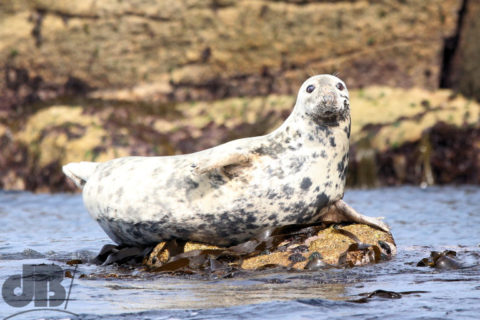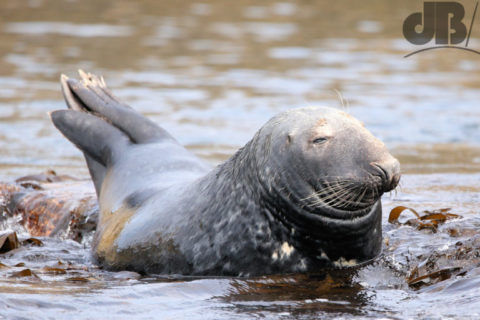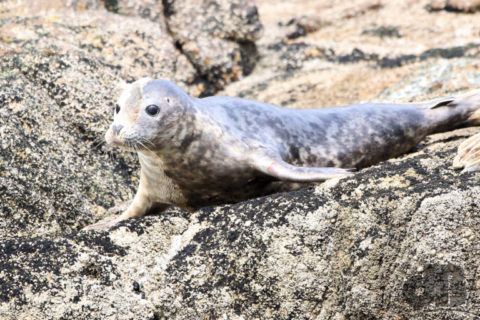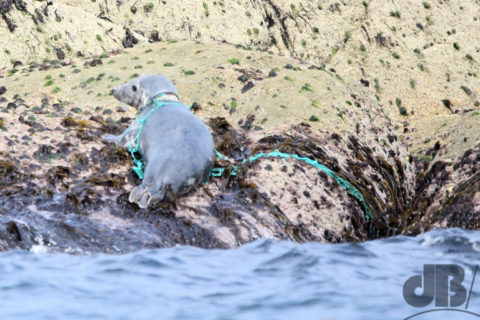
…actually, it was probably the 27th seal. We saw quite a few on a boat trip from Hugh Town on St Mary’s to the eastern isles of Scilly aboard Sea King skippered by Fraser Hicks. There were lots of adults and pups of the large species known as the grey, or Atlantic, seal (Alichoerus grypus, meaning “hooked-nosed sea pig”). Of course, seals are more closely related to otters and bears than pigs although their resemblance to dogs, and cats even, is often commented on. It’s evolutionary convergence, I believe, although otters and bears, cats, dogs and seals all share a common ancestor if you follow the branches of the family tree back far enough.

There are two sub-species of grey seal, A. g. atlantica (found on both sides of The Atlantic Ocean) and A. g. grypus (found in the Baltic Sea). However, the genetics suggests that the eastern and western Atlantic populations are distinct and have been for at least one million years, and so might also be seen as separate subspecies. The western Atlantic grey seals (or should that be gray seals?) are much bigger than members of the eastern population:
Western: Males grow up to 400 kg, females 250 kg.
Eastern: Males max out at ~310 kg and females ~190 kg.

They’re fascinating creatures and very photogenic. But, it’s with some sadness that among my photos from the trip is one of a seal pup with what looks like some nylon webbing from a crab pot entangled around its neck (see photo below). It looks as if the webbing has cut through the skin and blubber although there is no obvious bleeding, so presumably, the animal has been encumbered with this flotsam for quite some time. It is difficult to know whether it will survive into adulthood. We were in a boat with no possibility of getting close to the rocks to disentangle the animal. There were snorkellers in the water, but whether or not they could safely get to the animal is a moot point too.
